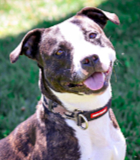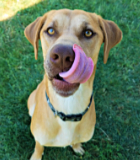Canine H3N8 Influenza – Dog Flu – Who is at risk?
- This topic has 0 replies, 1 voice, and was last updated 15 years, 4 months ago by
Mackenzie’s Admin.
-
AuthorPosts
-
December 31, 2009 at 10:08 pm #495
Mackenzie’s Admin
MemberFirst some background on CIV
The canine H3N8 virus, also called Canine Influenza Virus (CIV), is a relatively new influenza virus in dogs. It causes flu-like symptoms in dogs: coughing, sneezing, and runny nose are the most common clinical signs. Learn more about CIV infection.This virus jumped from horses to dogs in 2004; it was first discovered in Greyhounds in Florida. A vaccine for this respiratory disease was conditionally approved by the U.S. Department of Agriculture’s Animal and Plant Health Inspection Service (APHIS) in June 2009.
CIV Transmission
The H3N8 dog flu is a community-based disease. It is highly contagious between dogs and may also be transmitted by our hands, clothing, bowls and tools used between dogs. Please note: this virus is not spread TO people. It is important to isolate sick dogs and use proper sanitation (wash hands, disinfect tools and surfaces) between dogs to reduce chance of transmitting the virus between dogs.CIV and Lifestyle Risk
The CIV vaccine is a lifestyle vaccine. What does this mean? If you have a dog with a lifestyle that puts him or her at greater risk, you may want to consider vaccination. Dog shows, dog parks, kennels, grooming salons, dog day care centers, anywhere dogs gather may increase risk of CIV infection.Risk also depends on the prevalence of the virus in the area where you live or travel to. CIV has been reported in 30 US states and the District of Columbia. (AVMA Canine influenza Update Sept 2009).
Canine influenza is a new (novel) disease. Dogs do not have any natural immunity built up to protect them. According to Cynda Crawford DVM PhD and co-discoverer of the virus, "virtually all dogs exposed to the canine influenza virus become infected; about 80 percent develop a flu-like illness, while another 20 percent do not become ill. Fortunately, most dogs recover within two weeks without any further health complications. However, some dogs progress to pneumonia, which is usually due to secondary bacterial infections."
From the New York Times: 10 Things to Know About the H3N8 Dog FluWhat dogs should get the vaccine?
Due the contagiousness of this virus, some kennels, grooming salons and similar businesses are now requiring this vaccination to prevent an outbreak. Aside from those situations, the decision to vaccinate your dog (or not) should be discussed with your veterinarian, taking into consideration your dog’s risks and the CIV prevalence in your area or where you will be traveling to.Vaccine Facts:
The CIV vaccine is manufactured by Intervet/Schering Plough
Type: killed virus
Route: given subcutaneously (SQ)
Age of administration: 6 weeks or older
Dosage: 2 vaccinations, given 2-4 weeks apart
Frequency: annual vaccination after the two initial doses -
AuthorPosts
- You must be logged in to reply to this topic.











































